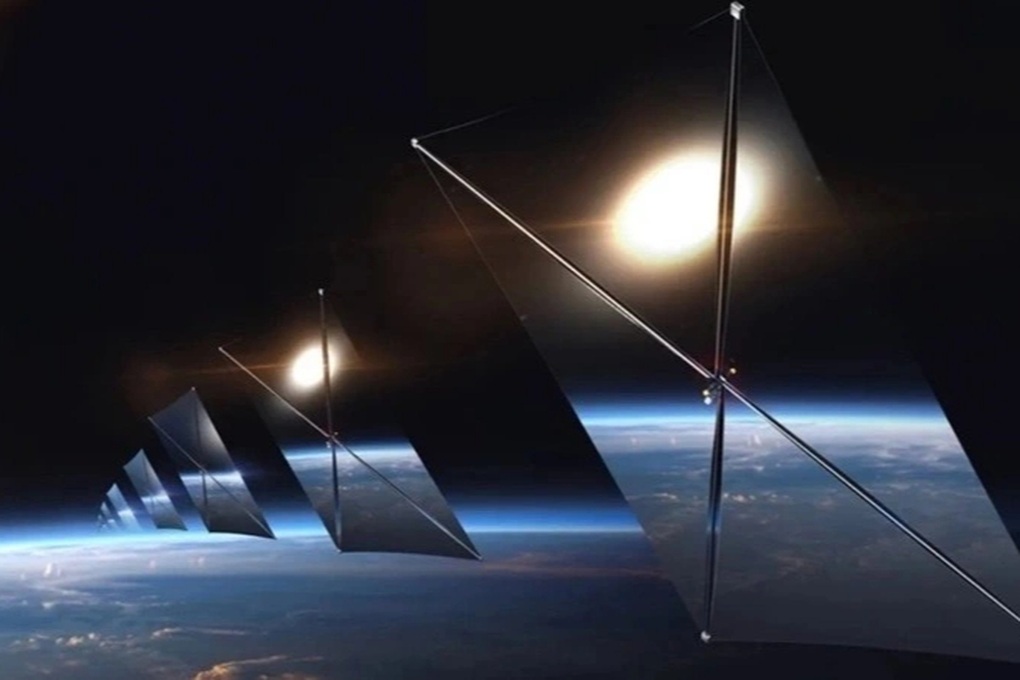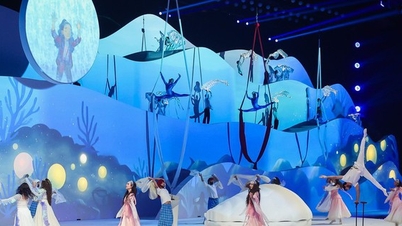Although praised as a bold idea in energy exploitation, the project has caused deep concern among scientists because it could cause a "light disaster" on a global scale.
Project to "light up the Earth" with space mirrors
Reflect Orbital, a company based in California (USA), has applied for permission from the US Federal Communications Commission (FCC) to launch an experimental satellite called EARENDIL-1 in April next year.
This is the first step in a long-term plan to deploy a "constellation" of more than 4,000 mirror satellites that reflect sunlight, operating in sun-synchronous orbit, where day and night are at the boundary.

According to the plan, the EARENDIL-1 satellite will open a giant 18x18m mirror in orbit, reflecting light down to Earth to test "lighting on demand" technology.
The company says the system can provide artificial solar-powered light at night, serving agriculture , renewable energy, urban lighting or rescue in disaster areas.
Reflect Orbital has received $1.25 million in funding from the US Air Force through the Small Business Innovation Research (SBIR) program, and revealed that it has received more than 250,000 applications for its services. If all goes well, by 2030, a network of 4,000 “solar mirrors” will cover the globe.
However, these promising ambitions are facing fierce opposition from astronomers and environmental conservation organizations.
Light is 4 times brighter than full moon
Reflect Orbital’s mirrors can reflect light four times brighter than a full moon and cannot be “turned off,” meaning they will continue to shine even after they leave the target area, warns John Berentine, an astronomer at Silverado Hills Observatory in Arizona.
He fears that these beams of light could disrupt the biological cycles of wildlife, disrupt the natural light balance and exacerbate the already widespread global light pollution.
Similarly, Robert Massey, deputy director of the Royal Astronomical Society, said Reflect Orbital's plan was a “nightmare” for astronomy.
“Their goal was to extend the daylight hours, to light up the sky. But for astronomers, it was a disaster,” he said.
Massey warned that if the project is approved, it could pave the way for other commercial companies to turn the night sky – humanity's common heritage – into “artificial light stages”.
In response to the protests, Reflect Orbital representatives said they understood the concerns and were working on ways to minimize the environmental impact of the light. The company asserted that each reflection only illuminated an area with a radius of about 5km, for a short time, not continuously.
As the satellite moves over an area that does not need illumination, the mirror tilts away from the beam to avoid shining directly on the ground.
“During the 2026 demonstration mission, observers will see the reflected light as a bright star moving across the sky. The area on the ground will be only as bright as moonlight,” said a spokesperson for Reflect Orbital.
However, scientists say these commitments are not convincing enough. Because even small deviations in orbit or reflection can cause uncontrollable consequences for the night sky.
The risk of "disappearance" of the starry sky
Light pollution was already a serious problem. Since the advent of LED lighting, light pollution levels have increased by an average of 10% per year. Twenty years ago, suburbanites could see about 250 stars, but today there are fewer than 100.
According to David Smith, Director of the UK insect conservation organization BugLife, extending daylight hours with artificial light disrupts the natural biological rhythms of all species: “The day-night cycle has been the foundation for controlling life on Earth for billions of years. Interfering with it is reckless.”
Studies also show that artificial light at night reduces insect populations, changes migratory bird behavior, increases sleep disturbances and the risk of depression in humans.
In recent years, satellite systems like SpaceX’s Starlink and AST SpaceMobile have been criticized for leaving bright streaks in the sky, distorting astronomical observations. However, these companies have proactively reduced their reflectivity with absorbent paint and light shielding.
Source: https://dantri.com.vn/khoa-hoc/ke-hoach-dung-4000-guong-vu-tru-chieu-sang-trai-dat-bi-xem-la-tham-hoa-20251023080146210.htm


![[Photo] Da Nang: Shock forces protect people's lives and property from natural disasters](https://vphoto.vietnam.vn/thumb/1200x675/vietnam/resource/IMAGE/2025/10/22/1761145662726_ndo_tr_z7144555003331-7912dd3d47479764c3df11043a705f22-3095-jpg.webp)
![[Photo] Comrade Nguyen Duy Ngoc visited and worked at SITRA Innovation Fund and ICEYE Space Technology Company](https://vphoto.vietnam.vn/thumb/1200x675/vietnam/resource/IMAGE/2025/10/23/1761174470916_dcngoc1-jpg.webp)


![[Photo] General Secretary To Lam and his wife begin their official visit to Bulgaria](https://vphoto.vietnam.vn/thumb/1200x675/vietnam/resource/IMAGE/2025/10/23/1761174468226_tbtpn5-jpg.webp)
![[Photo] Award Ceremony of the Political Contest on Protecting the Party's Ideological Foundation](https://vphoto.vietnam.vn/thumb/1200x675/vietnam/resource/IMAGE/2025/10/22/1761151665557_giaia-jpg.webp)































































































Comment (0)